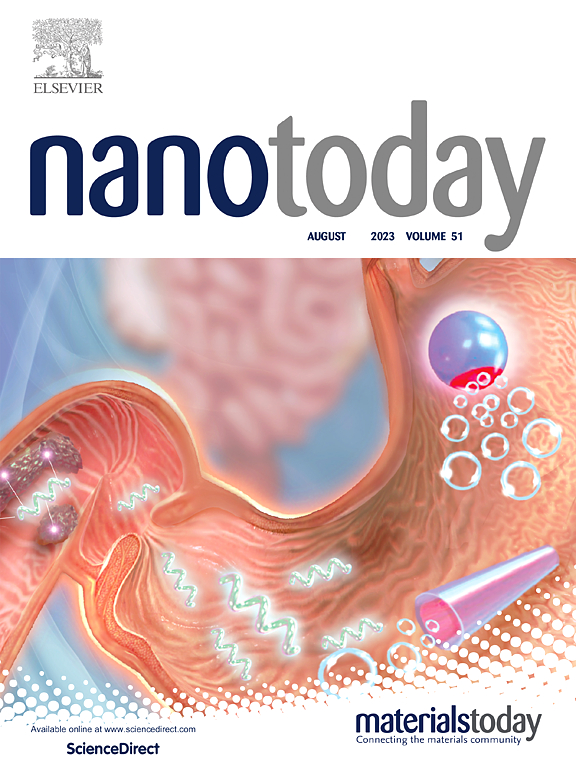DNA逻辑电路与酶扩增相结合,用于炎症相关mrna的信号增强和门控成像
IF 13.2
1区 材料科学
Q1 CHEMISTRY, MULTIDISCIPLINARY
引用次数: 0
摘要
and门控分子成像依靠同时输入两个或多个生物标志物产生一个响应信号,对提高病变识别和疾病诊断的准确性具有重要意义。然而,任何一种输入的不足以及多个反应步骤的累积效率损失都会限制与门控成像系统的总体动力学速率和响应信号强度,从而阻碍其在体内的性能。在这里,我们报告了一种原位酶扩增策略,以增强双炎症相关信使rna (mrna)的and门控成像的响应信号。在设计中,基于链位移反应的DNA逻辑电路被编程为响应双靶标并输出单链DNA,随后通过酶反应分子信标进行下游识别,其响应信号的放大由炎症细胞中的易位核酸酶特异性触发。此外,通过使用基于聚(β -氨基酯)的纳米载体来传递DNA探针,我们展示了信号放大传感系统,该系统能够通过白细胞介素-1 β和白细胞介素-6 mrna的and门控成像来监测体内急性肝炎的进展。本文章由计算机程序翻译,如有差异,请以英文原文为准。
DNA logic circuit coupled with enzymatic amplification for signal-enhanced, AND-gated imaging of inflammation-associated mRNAs
AND-gated molecular imaging, which relies on the simultaneous inputs of two or more biomarkers to produce one responsive signal, is of significance to improve the accuracy of lesion identification and disease diagnosis. However, the insufficiency of any one of these inputs and the cumulative efficiency loss in multiple reaction steps can limit the overall kinetic rate and the responsive signal intensity of the AND-gated imaging systems, hampering their performance in vivo. Here we report an in situ enzymatic amplification strategy to enhance the responsive signal of the AND-gated imaging of dual inflammation-associated messenger RNAs (mRNAs). In the design, a strand displacement reaction-based DNA logic circuit is programmed to respond to dual targets and output a single-stranded DNA, followed by downstream recognition with an enzyme-responsive molecular beacon, whose amplification of the responsive signal is specifically triggered by a translocated nuclease in inflammatory cells. Furthermore, by employing poly(beta-amino esters)-based nanocarriers to deliver the DNA probes, we demonstrated the signal-amplified sensing system enabled to monitor the progression of acute hepatitis in vivo via AND-gated imaging of interleukin-1 beta and interleukin-6 mRNAs.
求助全文
通过发布文献求助,成功后即可免费获取论文全文。
去求助
来源期刊

Nano Today
工程技术-材料科学:综合
CiteScore
21.50
自引率
3.40%
发文量
305
审稿时长
40 days
期刊介绍:
Nano Today is a journal dedicated to publishing influential and innovative work in the field of nanoscience and technology. It covers a wide range of subject areas including biomaterials, materials chemistry, materials science, chemistry, bioengineering, biochemistry, genetics and molecular biology, engineering, and nanotechnology. The journal considers articles that inform readers about the latest research, breakthroughs, and topical issues in these fields. It provides comprehensive coverage through a mixture of peer-reviewed articles, research news, and information on key developments. Nano Today is abstracted and indexed in Science Citation Index, Ei Compendex, Embase, Scopus, and INSPEC.
 求助内容:
求助内容: 应助结果提醒方式:
应助结果提醒方式:


